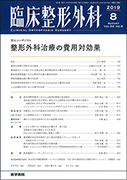1) Orimo H, Yaegashi Y, Hosoi T, et al. Hip fracture incidence in Japan:estimates of new patients in 2012 and 25-year trends.Osteoporos Int 2016;27(5):1777-84.
2) Hagino H, Endo N, Harada A, et al. Survey of hip fractures in Japan:recent trends in prevalence and treatment. J Orthop Sci 2017;22(5):909-14.
3) Horii M, Fujiwara H, Ikeda T, et al. Urban versus rural differences in the occurrence of hip fractures in Japan's Kyoto prefecture during 2008-2010:a comparison of femoral neck and trochanteric fractures. BMC Musculoskelet Disord 2013;14:304.
4) 内閣府ホームページ.高齢化の状況.平成28年度版高齢社会白書(概要版).https://www8.cao.go.jp/kourei/whitepaper/w-2016/html/gaiyou/s1_1.html
5) Committee for Osteoporosis Treatment of The Japanese Orthopaedic Association. Nationwide survey of hip fractures in Japan. J Orthop Sci 2004;9(1):1-5.
6) 竹村和生,河原郁生,川手健次・他.高齢者大腿骨近位部骨折の地域環境による違いについて.骨折2009;31(3):558-61.
7) Hagino H, Sakamoto K, Harada A, et al. Nationwide one-decade survey of hip fractures in Japan. J Orthop Sci 2010;15(6):737-45.
8) 福島 斉,佐藤和強,苅田達郎・他.環境整備だけでは高齢者の転倒は予防できない 大腿骨近位部骨折675例に対する聞き取り調査から.整形外科2017;68(5):401-6.
9) 小林 誠, 松下 隆, 大庭 浩.転倒による大腿骨頚部・転子部骨折 何をしていて転んだのか.骨・関節・靱帯 2006;19(1):49-54.
10) Lau EM, Gillespie BG, Valenti L, et al. The seasonality of hip fracture and its relationship with weather conditions in New South Wales. Aust J Public Health 1995;19(1):76-80.

